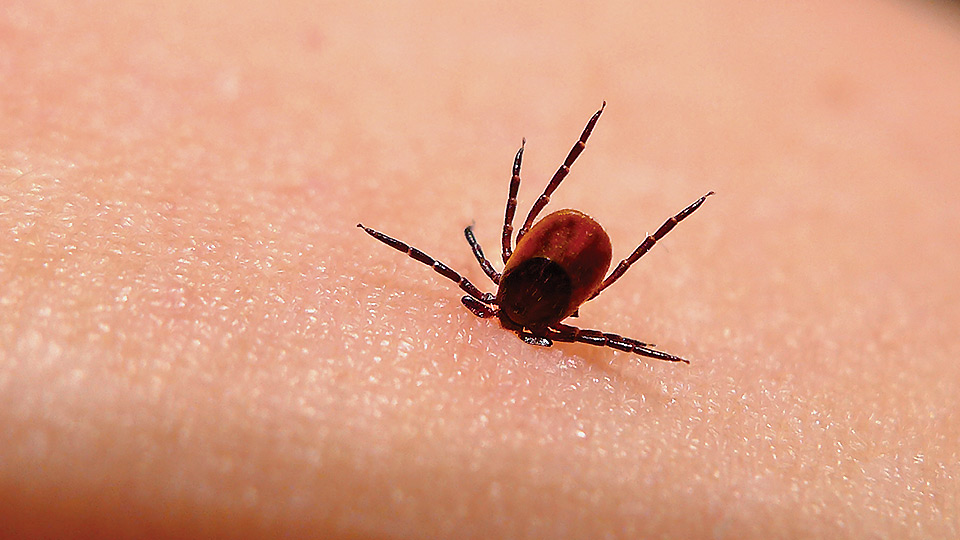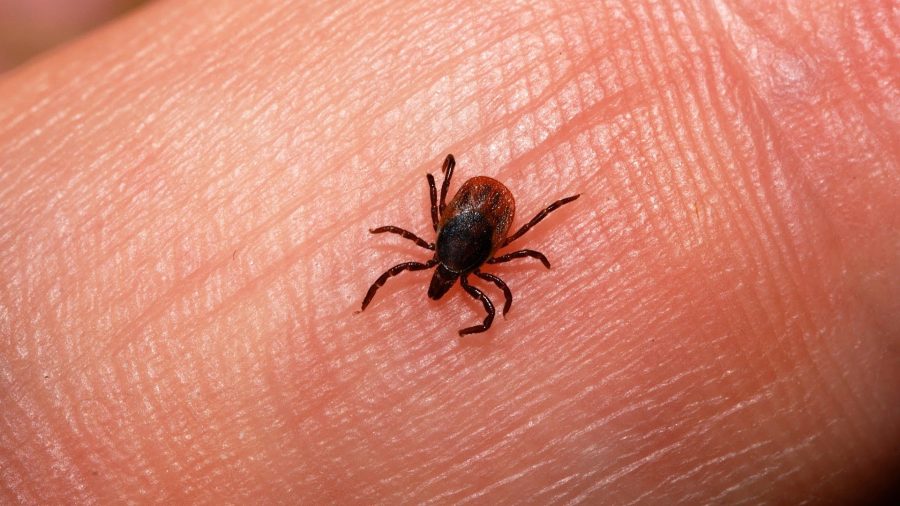Ticks pose a real threat to health for both animals and human beings as they transmit dangerous and deadly diseases. Tick season is around the corner and that is why it is important to understand tick-borne diseases, and what to do to avoid them because there are no cures for a lot of these infections.
Ticks can transmit several diseases including Lyme disease, anaplasmosis, and piroplasmosis. According to the Centers for Disease Control and Prevention, ticks can also transmit the Powassan virus, with symptoms including memory problems, headaches, and muscle wasting.

Lyme Disease is a significant threat to horses because it can go undiscovered
Lyme disease is caused by an infected Ixodes scapularis or “blacklegged” ticksl, also called deer ticks or bear ticks. Lyme disease might go undiscovered because it is really difficult for veterinarians to diagnose and to treat it. In general, the signs of the infection emerge six weeks after exposure.
As well, to diagnose it is tricky because most animals don’t exhibit the clinical signs, which might be confusing and might lead to the diagnose of other diseases. Even if someone knows an infected tick has bitten their horse, the parasite might or might not transmit the virus to the host, and the horse might or might not develop the symptoms.

For treatment, veterinarians most commonly prescribe oral doxycycline and minocycline, both antibiotics. Linda Mettel, from Cornell University’s Animal Health Diagnostic Center in Ithaca, New York, recommends horse owners to remove ticks as soon as it is possible. According to the CDC website, transmission of the B. Bergdorf Eri bacterium –which causes the disease- occurs 36-48 hours after the tick has begun feeding.
Anaplasmosis causes signs similar to the Potomac horse fever
Equine granulocytic anaplasmosis is another tick-borne bacterial disease caused by the bite of infected ‘I. scapularis and I. pacificus’ (Western blacklegged) ticks. The infection affects the hosts’ white cells. Clinical signs include high fever, suppressed appetite, edema (fluid swelling), depression, petechial (pinpoint) hemorrhage, and inability to walk normally. Most of the cases appear in late summer and early fall.
“In general, this is a self-limiting disease,” meaning it will resolve on its own, says Mittel, “but it can be critical to some horses.”
Horses with piroplasmosis can transmit the disease even if they are no longer sick
Piroplasmosis or babesiosis is a blood-borne disease caused by the Babesia Caballi parasite. It occurs when a tick gets infected by a horse that is carrying the virus and then it feeds on an uninfected horse. As well, the transmission of the disease can occur by using contaminated equipment between horses such as needles and surgical instruments. Infected blood transfusions might cause the disease, too.
Across the U.S, Piroplasmosis doesn’t seem to be a concerning problem since there have only been reported some isolated outbreaks. Every owner who desires to bring their horse into the U.S whether temporarily or permanently, must consign an Ep-negative test in order to be allowed to enter. However, there have been some exceptions to this rule, especially during international equestrian competitions. The infected horses show symptoms after two weeks of exposure, approximately. They can show signs of mild to acute fever, anemia, edema, labored breathing, and jaundice.

“Once infected, horses tend to become carriers, even after drug treatment to resolve the clinical signs. They may be still positive years after infection,” says Chantal Rothschild, of Northwest Equine Veterinary Associates. “Carrier horses have no clinical signs and cannot be distinguished from normal healthy horses (without diagnostic testing); however, they still have the potential to transmit the disease via ticks or contaminated equipment.”
Powassan infections are rare, but they are very dangerous
Powassan virus is a rare tick-borne pathogen that is considered to be deadlier than Lyme disease. 1 in 7 cases of Powassan disease leads to death. Powassan infections can be especially critical for newborns, the immunocompromised and the elderly.
“Of the survivors, at least 50 percent will have long-term neurological damage that is not going to resolve,” said Dr. Jennifer Lyons, from Division of Neurological Infections and Inflammatory Diseases chief at Brigham and Women’s Hospital in Boston.
According to experts, most of Powassan virus infections occur in late spring. They worry that ticks are transmitting this disease to humans. Powassan virus symptoms include fever, headache, muscle pain, weakness, chills, vomiting, and paralysis.
Source: Yahoo
